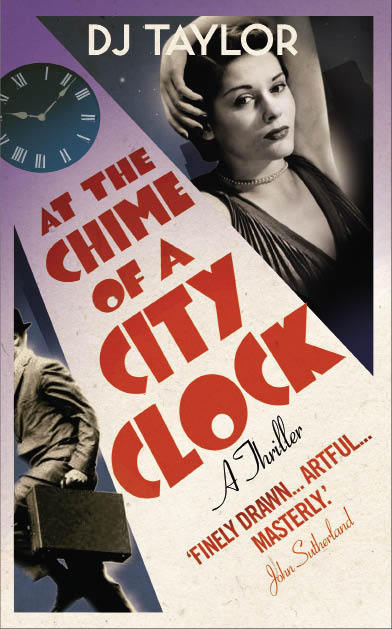The strange, unsettled decades between the wars form the backdrop of much of D. J. Taylor’s recent work, including his novel, Ask Alice, and his social history, Bright Young Things. At the Chime of a City Clock is set in 1931, with a financial crisis rumbling in the background.
The strange, unsettled decades between the wars form the backdrop of much of D. J. Taylor’s recent work, including his novel, Ask Alice, and his social history, Bright Young Things. At the Chime of a City Clock is set in 1931, with a financial crisis rumbling in the background. James Ross, a struggling writer, tries to keep his landlady at bay with the meagre income he earns as a door-to-door carpet-cleaner salesman. On his rounds he encounters Susie Chamberlain, a disturbingly sexy secretary, who appears to welcome his attentions. Her employer, the mysterious Mr Rasmussen, dabbles in murky commercial enterprises, mixes in the best society and looks oddly like one of the photographs of wanted men in Police News.
Rasmussen is planning a burglary at a Cornhill jeweller’s with the assistance of his sidekicks, Davenport and Hines, and he also has a scheme involving a weekend party at Newcome Grange, the country house of a celebrated society hostess, Mrs Antrobus. Because of his lustful pursuit of Susie, James comes to the attention of Mr Havisham, a detective from West End Central. Havisham (who has ‘an odd, mad look in his eyes’) recruits James to spy on Rasmussen. This, more or less, is the spine of the narrative. Around it swirls an extensive cast of semi-detached minor characters, ranging from a loathsome cockney employed by Rasmussen to an upper-crust cocaine addict named Lady Evadne, from James’s colleagues at the ailing Abraxas Carpet Cleaning Company to his feckless Uncle George.








Comments
Join the debate for just £1 a month
Be part of the conversation with other Spectator readers by getting your first three months for £3.
UNLOCK ACCESS Just £1 a monthAlready a subscriber? Log in